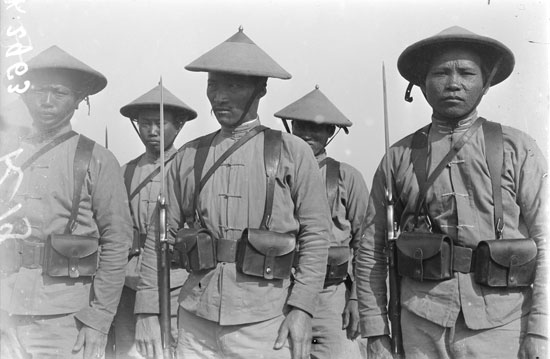
As previously noted the conical hat – known as the “nón lá” or leaf hat – was in fact widely used in the Vietnam and neighboring regions throughout the 19th century by farmers and soldiers (including bandits) alike.
What is unique about the Vietnamese nón lá is that it has its own origin, based on a legend to the growing of rice in the region. This tells of a giant woman from the sky who protected humanity from a deluge of rain, and she wore a hat made of four round shaped leaves to protect her from the rain – and that inspired farmers to stitch together their own style of helmet. This has evolved over the centuries and various styles have become common in the different parts of Vietnam.
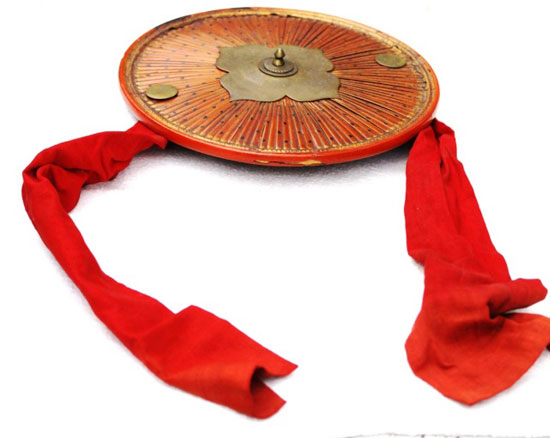
A 19th century “salacco” of the style used by the Tonkinese Rifles.
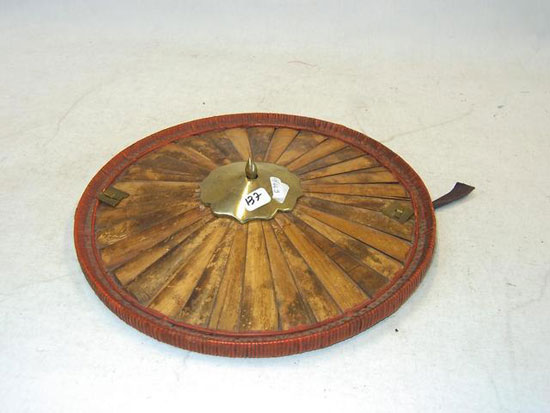
The salacco evolved over time, but the spike at the dome remained present.
When the region came under French control, indigenous troops in South East Asia, did wear a unique version of the nón lá. Just as the Chinese serving under British officers worn a conical hat with a crown, the French version typically featured the French Marine Infantry anchor – and this has led to confusion that these were “naval” troops, which they were not.
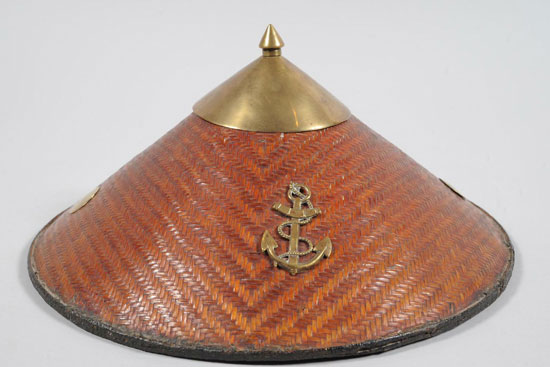
The classic “salacco” of the Tirailleurs Indochinois – it features the French Marine Infantry anchor on the front.
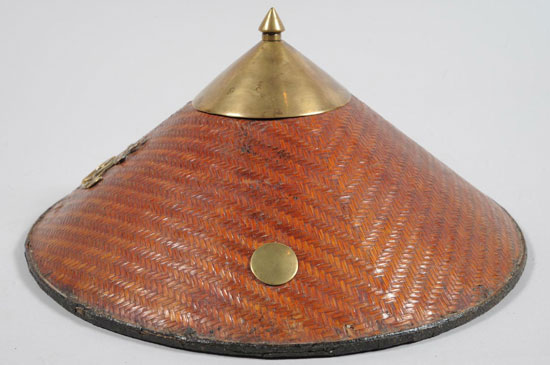
The side view of the salacco or leaf hat. It has a brass spike at the top.
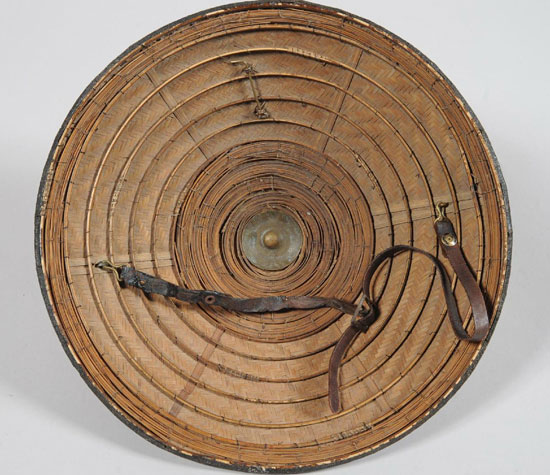
The interior shows the classic weave pattern of an Asian conical hat
This style of headgear, which is known in French as the “salacco,” was used by the Tirailleurs Indochinois (Lính tập), which included several regiments of local ethnic Indochinese infantry organized as Tirailleurs (Light Infantry) by the French colonial authorities. Based on photos and reports it was worn in conflicts including the Boxer Rebellion, but its use as combat headgear was short lived.
Following the First World War I this style conical hat was relegated to the parade ground and there is no photographic evidence that the French colonial forces ever used the nón lá/salacco in combat even during the First World War.
The conical hat continues to evoke another time with exotic ties, but for the collector it is important to note that styles varied across the Far East. The true military ones – including those of French Tirailleurs Indochinois as well as the Imperial Chinese Army dǒulì have become sought after by collectors, but fortunately fakes haven’t shown up.
The Forgotten French Tirailleurs Indochinois
Much has been written about the French military’s African volunteers, but much lesser known is the Tirailleurs Indochinois (Lính tập). Formed in March 1880, the most notable, and first established, of these units were the Tonkinese Rifles (French: Tirailleurs tonkinois, Vietnamese: Quân đoàn bộ binh Bắc Kỳ).
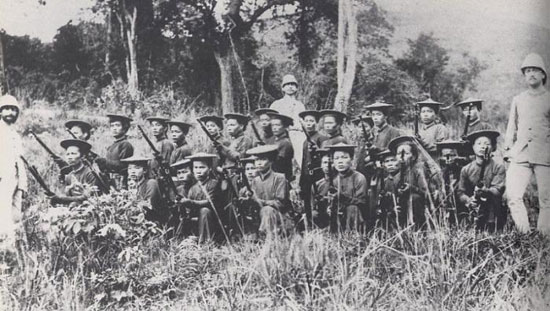
The Tonkinese Rifles in the 1890s in French Indo-China
The Tirailleurs Indochinois saw active service in Indochina, in China during the Boxer Rebellion and were deployed to the Western Front during World War I. Initially the French were reluctant to send the units to France – likely a response to how other colonial forces had fared in the cold and wet conditions, but some 40,000 Annamite and Cambodian tirailleurs were sent to France.
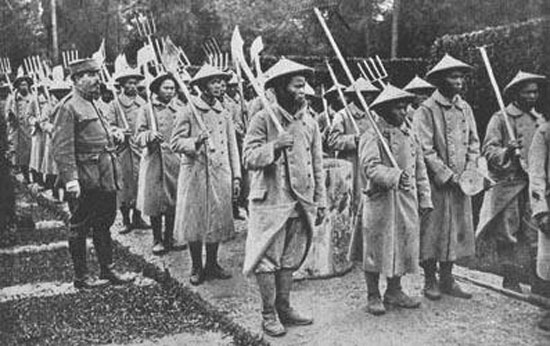
The Tirailleurs Indochinois acted as laborers before serving on the Western Front and the Balkans during World War I.
While the majority of these men served in worker and guard units, several battalions fought at Verdun, the Chemin des Dames, and in Champagne before being transferred to the Balkan Front.. These troops later took part in the Allied intervention in Russia (1918–19) and later were deployed to Syria (1920–21) and Morocco (1925–26).
Just as the British had to deal with some mutinies of its colonial troops, so too did the French. In February 1930 some 50 soldiers of the Tonkinese Rifles rose in support of the nationalist socialist Việt Nam QuốcDânĐảng (VNQDD) during the Yen Bai munity. It was quickly suppressed by loyal Tirailleurs of the same regiment, but resulted in increased recruitment of non-Vietnamese soldiers.
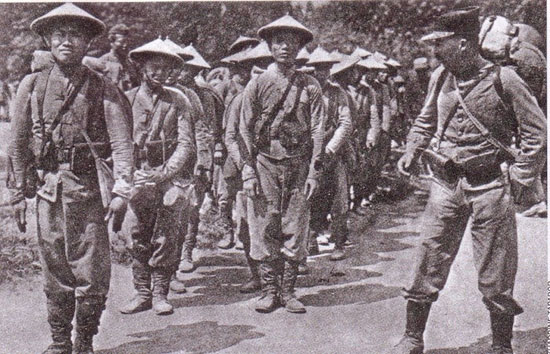
The Tirailleurs Indochinois in Indo-China at the beginning of the 20th century
The Tirailleurs Indochinois played less of a role during World War II, but in 1945 some units fought against the Japanese occupation in Vietnam. This included the “3e RTT” (3e régiment de tirailleurs tonkinois), which offered fierce resistance until it was annihilated. In total, the six Tonkinese and Annamite tirailleur regiments then in existence were destroyed or dispersed in the course of the Japanese coup, and were not reestablished.
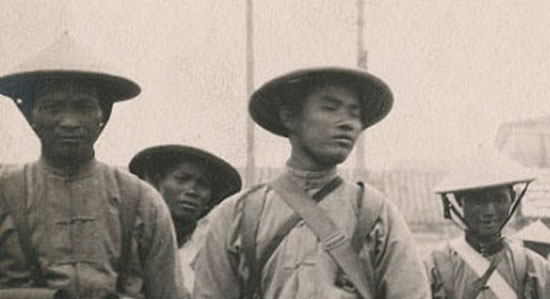
This photo shows the classic salacco was often worn with a cover to protect it from the elements.
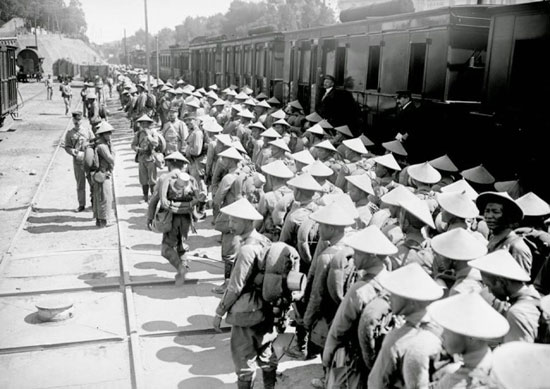
Another photo shows the troops arriving in France – likely during the First World War. Hat covers can also be seen in this photo.
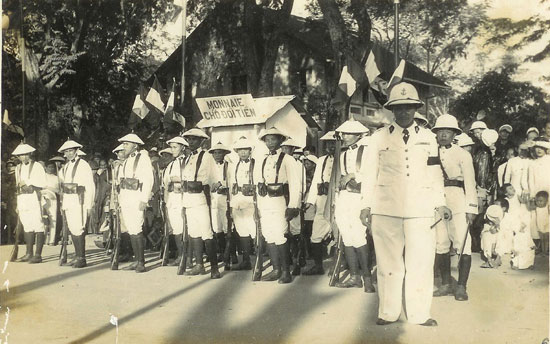
As noted in this interwar photo French officers and Asian NCO’s wore the new Model 1931 sun helmets while the ranks continued to wear the conical hat salacco with covers.
After World War II, large numbers of Vietnamese troops did serve in the French Union Forces during the French Indochina War (1946–1954) and the last Indochinese unit in the French Army was not disbanded until 1960.
Peter Suciu
May 2017
Peter Suciu is currently seeking one of these hats for his collection. Send him a message if you have one for sale as he would pay top dollar.

Outstanding post on a little know part of history. I did not know that Vietnamese troops were fighting in Europe during WW1.Thank you very much for posting this site! Very enlightening.
Bonjour,
Êtes vous toujours à la recherche d’un salacco ?
Cordialement.
P. B